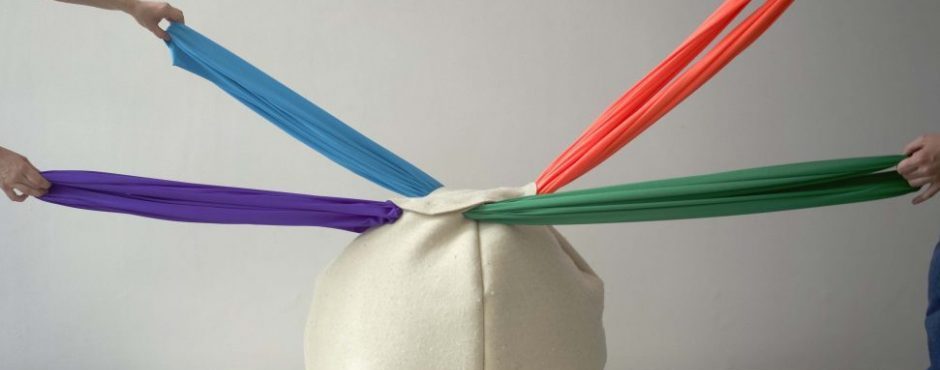Contextual Background
In my teaching experience, I worked with many neurodiverse cohorts, including students diagnosed with autism, dyslexia, ADHD, bipolar disorder, and social anxiety. Many also manage additional responsibilities such as caregiving and employment alongside their studies. Traditional teaching methods often do not fully accommodate neurodivergent learners, leading to participation anxiety, sensory discomfort, and communication challenges. This case study reflects on my strategies to create an inclusive environment that supports neurodivergent BA Y2 students at LCC while ensuring equitable engagement and access to learning opportunities.
Evaluation of Current Strategies
To accommodate students’ diverse needs, I have implemented several inclusive strategies:
- Language Sensitivity: I avoid ableist language (Bottema-Beutel et al., 2021) and encourage students to do the same.
- Environmental Adjustments: Modify the room lighting and minimise background noise to assist students with sensory sensitivities.
- Flexible Attendance and Breaks: Allowing students to take breaks or leave the room as needed without penalty.
- Accessible Content: Provide advanced slides with high readability formatting (16/18pt fonts min, high contrast, clear layouts, alt text) (LCC, Teaching Hub, 2022).
- Alternative Participation Methods: To ease participation anxiety, encourage doodling, quiet participation, and anonymous feedback (Harris, 2022).
- Group-Based Learning: Implementing small-group critiques and peer feedback instead of class-wide critiques to reduce performance pressure.
- Use of Translation Tools: Allowing students, particularly those from non-English-speaking backgrounds, to use translation apps.
These approaches have improved accessibility for many students, yet challenges remain. Some students still struggle with attendance, engagement, and collaboration, particularly in group activities where communication breakdowns occur. Additionally, ensuring inclusivity for neurodivergent and multilingual students while maintaining an engaging classroom environment for all remains an ongoing challenge.
Moving Forward
Neurodiversity advocates emphasise shifting from interventionist approaches to ones that value diverse cognitive profiles (Glass, Meyer, and Rose, 2013). To create a more inclusive learning space, I aim to implement additional strategies aligned with Universal Design for Learning (CAST, 2018), such as by providing varied ways for students to interact with the learning material, including choices in activities, level of challenge, and feedback mechanisms, and allowing students to demonstrate their knowledge through different methods like writing, speaking, creating projects, or using assistive technology.
1. Enhancing Student Agency Through Dialogue
I plan to initiate open individual and group conversations with students, in person or online, to gather feedback on how they experience the class environment. This aligns with Milton, Martin, and Melham’s (2016) advocacy for co-creating autistic-friendly spaces. Encouraging student agency to shape their learning environment will provide insight into adjustments that can benefit the entire cohort.
2. Implementing Multi-Modal Learning Approaches
Expanding multimodal learning tools, such as video lectures with captions, visual aids, and interactive activities, will cater to students with varied learning styles and language proficiencies. This approach also aligns with Kolb and Kolb’s (2010) theory on ludic learning spaces, which support experiential and flexible learning.
3. Improving Classroom Design and Accessibility
Physical classroom constraints remain barriers, such as poorly placed screens, lack of temperature control, and inadequate space for all students. While institutional constraints limit immediate changes, I will advocate for more flexible learning environments that prioritise student comfort and accessibility.
4. Strengthening Peer Support and Group Collaboration
While small-group discussions have helped reduce anxiety around participation, communication breakdowns remain an issue. To address this, I will:
- Assign clearer group roles to ensure equitable contribution.
- Implement structured peer mentoring to support students who struggle with social interaction.
- Develop guidelines for effective group work, integrating frameworks like IDEO’s collaborative design principles.
Reflection on Future Practice
By embedding student feedback into my pedagogical approach and integrating research-backed inclusive strategies, I aim to cultivate an environment where neurodivergent and multilingual students feel valued. Balancing accessibility with engagement is an ongoing challenge. Still, by leveraging Universal Design for Learning principles and maintaining an open dialogue with students, I can continue refining my teaching practice to effectively support diverse learners.
(Totals word count: 634)
References
Arao, B. and Clemens, K., 2023. From Safe Spaces to Brave Spaces: A New Way to Frame Dialogue Around Diversity and Social Justice. In The Art of Effective Facilitation (pp. 135-150). Routledge.
Bottema-Beutel, K., Kapp, S.K., Lester, J.N., Sasson, N.J. and Hand, B.N., 2021. Avoiding ableist language: Suggestions for autism researchers. Autism in Adulthood.
CAST (2018). Universal Design for Learning Guidelines version 2.2. Available at: http://udlguidelines.cast.org (Accessed: 05 January 2025).
Glass, D., Meyer, A. and Rose, D., 2013. Universal Design for Learning and the Arts. Harvard Educational Review, 83(1), pp.98-119.
Harris, K., 2022. Embracing the Silence: Introverted Learning and the Online Classroom. Spark: UAL Creative Teaching and Learning Journal, 5(1), pp.101-104.
Kolb, A.Y. and Kolb, D.A., 2010. Learning to Play, Playing to Learn: A Case Study of a Ludic Learning Space. Journal of Organizational Change Management, 23(1), pp.26-50. Milton, D., Martin, N. and Melham, P., 2016. Beyond Reasonable Adjustment: Autistic-Friendly Spaces and Universal Design. Pavilion.
LCC, Teaching Hub, 2022. Making Accessibility a Habit: Power Point. https://lccteaching.myblog.arts.ac.uk/make-accessibility-a-habit-power-point/ Accessed on 05/03/2025
